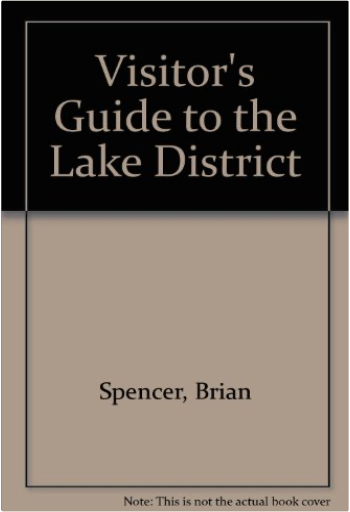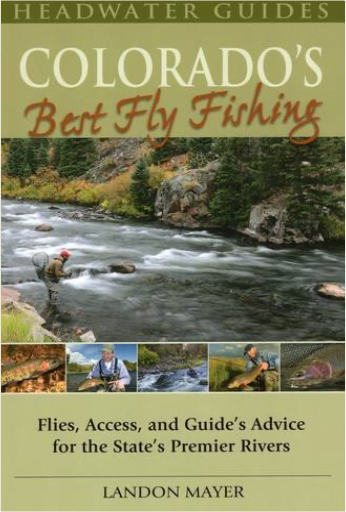 Colorado's Best Fly Fishing: Flies, Access, and Guide's Advice for the State's Premier RiversLandon Mayer Colorado's Best Fly Fishing: Flies, Access, and Guide's Advice for the State's Premier RiversLandon Mayer The best places and times to fishDetailed maps and hatch charts plus top producing fly patterns with recipesLocal guides, outfitters, and other experts on techniques and tackle, including Pat Dorsey, John Barr, Will Sands, Steve Henderson, Bill Edrington, Larry Kingery, Jackson Streit, Ed Engle, and more 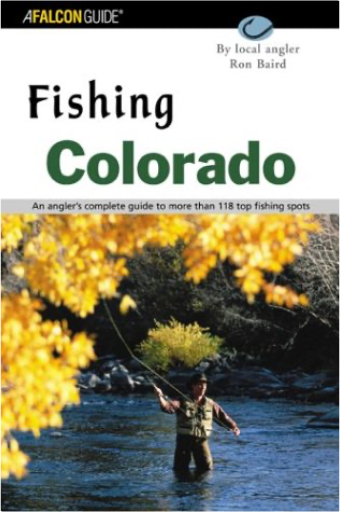 Fishing Colorado: An Angler's Complete Guide to More Than 118 Top Fishing SpotsRon Baird Fishing Colorado: An Angler's Complete Guide to More Than 118 Top Fishing SpotsRon Baird This latest addition to the Falcon Fishing series tackles the great angling state of Colorado. Features the best fishing locations, with maps and detailed directions, information on the best times of year and the different gamefish available at each location, tackle recommendations, advice on camping, notes on special regulations, and much more. An indispensable guide both for Colorado residents and visiting anglers. 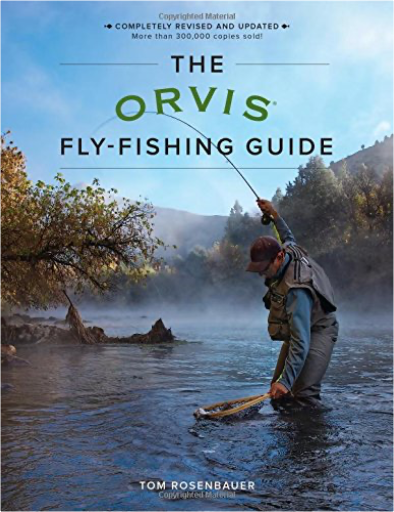 The Orvis Fly-Fishing Guide, RevisedTom Rosenbauer The Orvis Fly-Fishing Guide, RevisedTom Rosenbauer The Orvis Fly-Fishing Guide is the best-selling book for fly anglers!
Whether you’re a soon-to-be fly fisher looking for the right book to get you started or you’re reasonably proficient at the sport and need a refresher course on tying knots for saltwater or the latest info on how to care for your waders or how to fish a dry fly in tricky currents, this invaluable, best-selling guide is for you.
The latest, most up-to-date and trustworthy information on:
*tackle selection and care—rods, reels, lines, leaders and knots
*casting with instructive line drawings by Bob White
* hundreds of flies in full color, including 50 new patterns
*presentation, striking, playing and landing
*tactics for stream, stillwater and salt
*new techniques including Tenkara and Czech nymphing
* how to fish all the major gamefish, fresh and saltwater, including salmon and steelhead
*plus a new chapter on conservation, stream etiquette and giving back 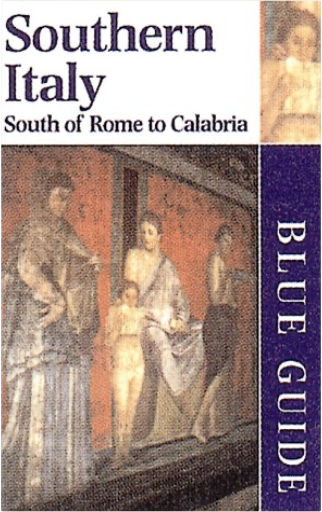 Southern Italy: South of Rome to Calabria: Blue GuidePaul Blanchard Southern Italy: South of Rome to Calabria: Blue GuidePaul Blanchard This guide covers seven stunning regions of Italy from Lazio, the section south of Rome, down to Calabria. Also included is comprehensive information on Naples and the islands of southern Italy — Capri, Ischia, and Procida. Southern Italy offers a spectacular array of sites, including Pompeii, Herculaneum, and Vesuvius. Everything from art and architecture to flora and fauna is covered in this detailed and indispensable guide. 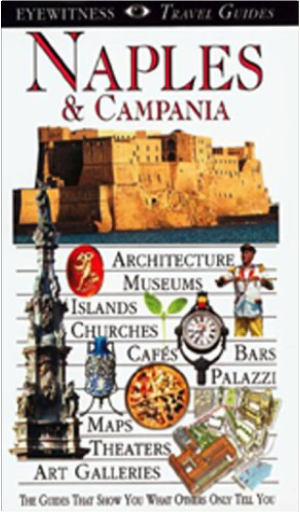 Eyewitness Travel Guide to NaplesDK Publishing Eyewitness Travel Guide to NaplesDK Publishing The guide that shows you what other travel books only tell you!
If the largest city in southern Italy is your destination, then get an advanced preview of its attractions with DK's Eyewitness Travel Guide: Naples. More than 600 full-color photographs capture the splendid architecture, art, panoramas, and landscapes of this marvelous city and surrounding area. Street-by-street maps and illustrated aerial views guide you through the city's six districts to sights such as the Museo Archeologico Nazionale, the Great Cathedral, and the Duomo. Other outstanding articles spotlight Santa Chiara, the Museo Nazionale and Park of Capodimonte, and Certosa di San Martino. Take trips by both land and water around Posillipo, the peninsula that juts out into the Bay of Naples. Beyond Naples, the handbook guides you through Pompeii, the Amalfi Coast, Mount Vesuvuis, the Royal Palace of Caserta, the island of Capri, and more. From its beginnings as a Greek colony to contemporary daily life, the remarkable history of Naples is covered in a chapter complete with timelines, illustrations, and photos of artifacts from a variety of eras. 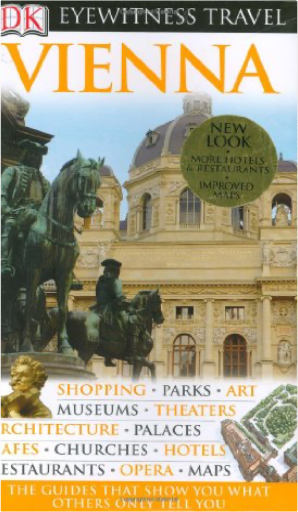 ViennaStephen Brook ViennaStephen Brook DK Eyewitness Travel's full-color guidebooks to hundreds of destinations around the world truly show you what others only tell you. They have become renowned for their visual excellence, which includes unparalleled photography, 3-D mapping, and specially commissioned cutaway illustrations.
DK Eyewitness Travel Guides are the only guides that work equally well for inspiration, as a planning tool, a practical resource while traveling, and a keepsake following any trip.
Each guide is packed with the up-to-date, reliable destination information every traveler needs, including extensive hotel and restaurant listings, themed itineraries, lush photography, and numerous maps. 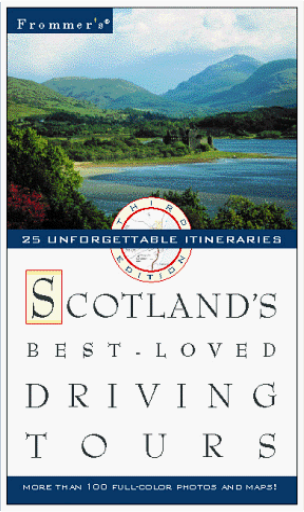 Frommer's Scotland's Best-Loved Driving ToursDavid Williams Frommer's Scotland's Best-Loved Driving ToursDavid Williams Completely redesigned last year, with gorgeous covers and a handy new trim size, Frommers Driving Tours are the premier full-color series for travelers who want to hit the road and explore at their own pace. Each guide is packed with detailed, color-coded maps and stunning full-color photographs. We outline dozens of driving tour options and then help you plan your route with exact directions, distances, and driving times. Youll enjoy all the top sights and then have the flexibility to enjoy the hidden pleasures of each destinationour suggested tours include scenic detours and stops for spectacular views, easy walks, shopping, dining, and fun breaks for travelers with kids.  The Rough Guide to Egypt, 4th EditionDan Richardson The Rough Guide to Egypt, 4th EditionDan Richardson INTRODUCTION
Egypt is the oldest tourist destination on earth. Ancient Greeks and Romans started the trend, coming to goggle at the cyclopean scale of the Pyramids and the Colossi of Thebes. At the onset of colonial times, Napoleon and the British in turn looted Egypt’s treasures to fill their national museums, sparking off a trickle of Grand Tourists that, by the 1860s, had grown into a flood of travellers, packaged for their Nile cruises and Egyptological lectures by the enterprising Thomas Cook.
Today, the attractions of the country are little different. The focus of most visits remains the great monuments of the Nile Valley, combined with a few days spent exploring the souks, mosques and madrassas of Islamic Cairo. However, possibilities for Egyptian travel also encompass snorkelling and diving along the Red Sea coasts, remote oases and camel trips into the mountains of Sinai, or visits to the Coptic monasteries of the Eastern Desert.
The land itself is a freak of nature, whose lifeblood is the River Nile. From the Sudanese border to the shores of the Mediterranean, the Nile Valley and its Delta are flanked by arid wastes, the latter as empty as the former are teeming with people. This stark duality between fertility and desolation is fundamental to Egypt’s character and has shaped its development since prehistoric times, imparting continuity to diverse cultures and peoples over five millennia. It is a sense of permanence and timelessness that is buttressed by religion, which pervades every aspect of life. Although the pagan cults of ancient Egypt are as moribund as its legacy of mummies and temples, their ancient fertility rites and processions of boats still hold their place in the celebrations of Islam and Christianity.
The result is a multi-layered culture, which seems to accord equal respect to ancient and modern. The peasants (fellaheen) of the Nile and Bedouin tribes of the desert live much as their ancestors did a thousand years ago. Other communities include the Nubians of the far south, and the Coptic Christians, who trace their ancestry back to pharaonic times. What unites them is a love of their homeland, extended family ties, dignity, warmth and hospitality towards strangers. Though most visitors are drawn to Egypt by its monuments, the enduring memory is likely to be of its people and their way of life.
REGIONS AND HIGHLIGHTS
Each of the regions is discussed in its own chapter introduction; what follows is merely the briefest outline of the main attractions.
Most visitors arrive at Cairo. A seething megalopolis, its chief sightseeing appeal lies in its bazaars and medieval mosques, though there is scarcely less fascination in its juxtapositions of medieval and modern life, with fortified gates, villas and skyscrapers interwoven by flyovers whose traffic may be halted by herds of camels. The immensity and diversity of this "Mother of Cities" is as staggering as anything you’ll encounter in Egypt, while just outside Cairo are the first of the pyramids that range across the desert to the edge of the Fayoum, among them the unsurpassable trio at Giza and the vast necropolis of Saqqara. Besides all this, there are superb museums devoted to Ancient, Coptic and Islamic Egypt, and enough entertainments to occupy weeks of your time.
However, the principal tourist lure remains, as ever, the Nile Valley, with its ancient monuments and timeless river vistas – felucca sailboat cruises being a great way to combine the two. The town of Luxor is synonymous with the magnificent temples of Karnak and the Theban Necropolis, which includes the Valley of the Kings where Tutankhamun and other pharaohs were buried. Aswan, Egypt’s southernmost city, has the loveliest setting on the Nile and a languorous ambience. From here, you can visit the island Philae temple of Isis and the rock-hewn colossi at Abu Simbel. Other sites not to be missed are Edfu and Kom Ombo (between Luxor and Aswan) and – for those willing to chance their luck on the fringes of potentially risky Middle Egypt – the amazing temples of Abydos and Dendara (north of Luxor).
Only accessible to tourists in the last two decades, the Western Desert Oases are scattered across a vast, awesomely desolate region. Siwa, out towards the Libyan border, has a unique culture and history, limpid pools and bags of charm. Another option is to follow the "Great Desert Circuit" (starting from Cairo or Assyut) through the four "inner" oases. Though Bahariya and Farafra hold the most appeal, with the lovely White Desert between them, the larger oases of Dakhla and Kharga also have their rewards once you escape their modernized "capitals". And for those equipped to make serious desert expeditions, there’s the challenge of entering the Great Sand Sea or tracing part of the infamous Forty Days Road. By way of contrast to these deep-desert locations are the quasi-oases of the Fayoum and Wadi Natrun, with their diverse ancient ruins and Coptic monasteries. |
 Colorado's Best Fly Fishing: Flies, Access, and Guide's Advice for the State's Premier RiversLandon Mayer
Colorado's Best Fly Fishing: Flies, Access, and Guide's Advice for the State's Premier RiversLandon Mayer 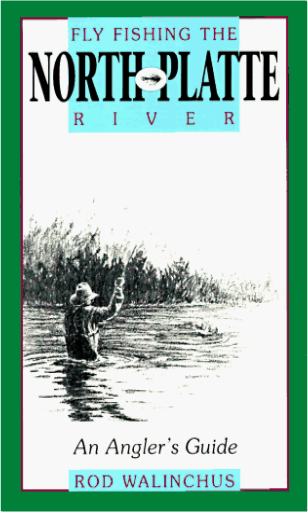 Fly Fishing the North Platte River: An Angler's GuideWalinchus Rod
Fly Fishing the North Platte River: An Angler's GuideWalinchus Rod 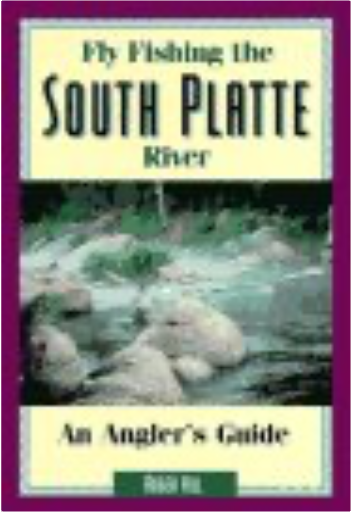 Fly Fishing the South Platte River: An Angler's GuideHill Roger
Fly Fishing the South Platte River: An Angler's GuideHill Roger  Fishing Colorado: An Angler's Complete Guide to More Than 118 Top Fishing SpotsRon Baird
Fishing Colorado: An Angler's Complete Guide to More Than 118 Top Fishing SpotsRon Baird  The Orvis Fly-Fishing Guide, RevisedTom Rosenbauer
The Orvis Fly-Fishing Guide, RevisedTom Rosenbauer  Southern Italy: South of Rome to Calabria: Blue GuidePaul Blanchard
Southern Italy: South of Rome to Calabria: Blue GuidePaul Blanchard  Eyewitness Travel Guide to NaplesDK Publishing
Eyewitness Travel Guide to NaplesDK Publishing  ViennaStephen Brook
ViennaStephen Brook  Frommer's Scotland's Best-Loved Driving ToursDavid Williams
Frommer's Scotland's Best-Loved Driving ToursDavid Williams  The Rough Guide to Egypt, 4th EditionDan Richardson
The Rough Guide to Egypt, 4th EditionDan Richardson  Made with Delicious Library
Made with Delicious Library
